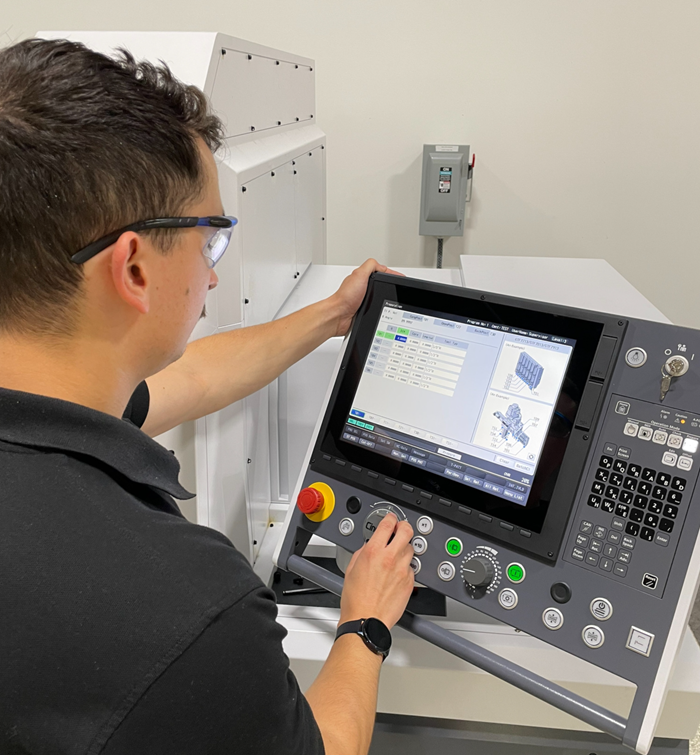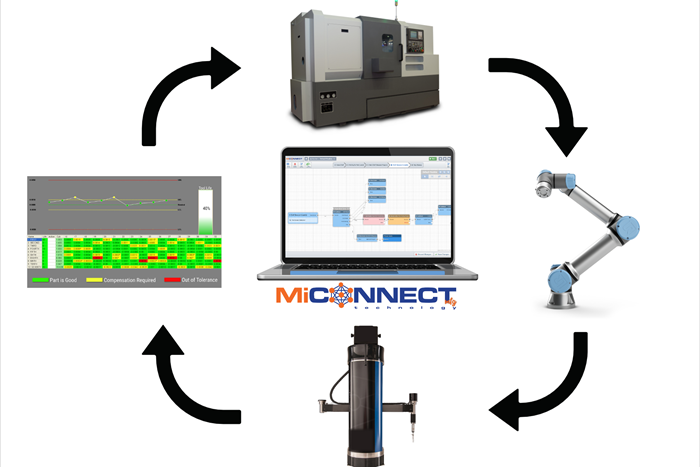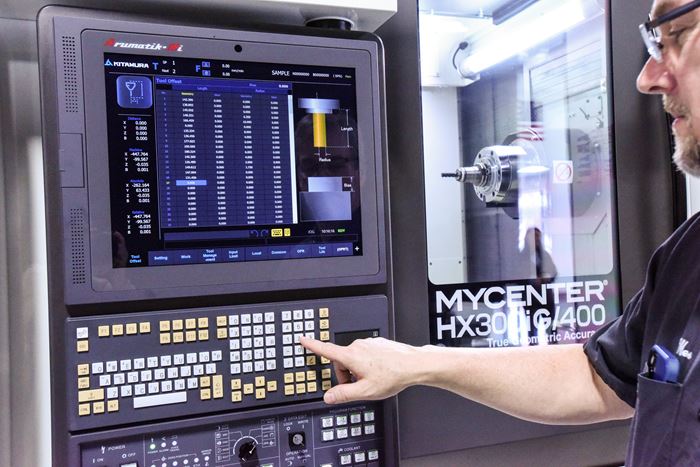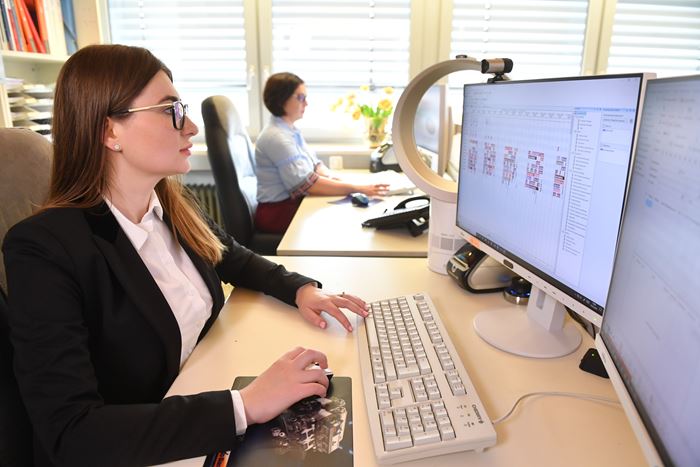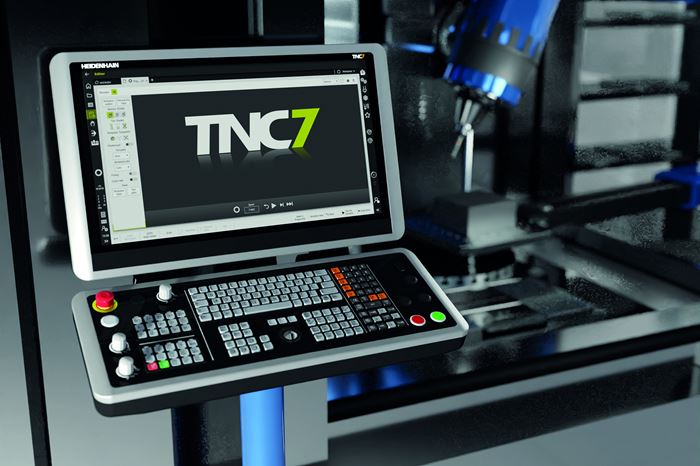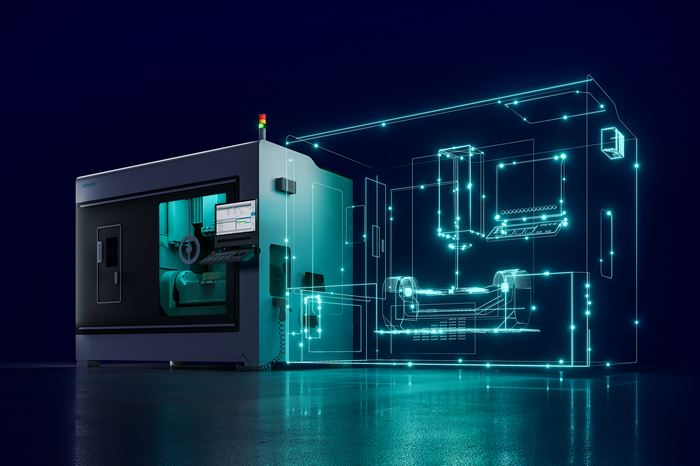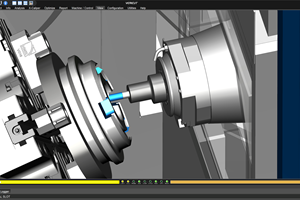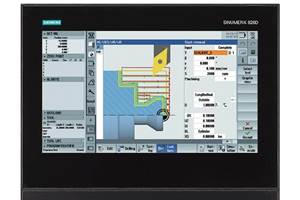The CNC (computer numerical control) system of a machine tool includes the control unit itself, as well as the motion-control system such as the servomotors, drives and axis positioning devices. These components are part of any CNC machine tool, but they might be bought separately and retrofitted later on older machines that are upgraded or refurbished. Also part of the control system are sensors that may allow the control to make certain real-time decisions during unattended or lightly attended machining processes. These can include probes for measuring the position of the part or machined features, as well as monitoring systems for detecting the presence of the tool or the force that is being exerted in the cut.
Swiss-Type Control Uses CNC Data to Improve Efficiency
Advanced controls for Swiss-type CNC lathes uses machine data to prevent tool collisions, saving setup time and scrap costs.
CNC & Machine Controls : Essential Reading
5 G-Code Tips for Increasing CNC Efficiency
Optimizing G code is a low-cost way to improve CNC efficiency without sacrificing usability and safety.
Understanding G27, G28, G29 and G30
Take a closer look at these reference position commands.
Understanding CNC Machine Accuracy and Repeatability
Properly evaluating machine tool capability requires understanding how the both user and the builder can influence precision.
When to Use Custom Macros With a CAM System
Custom macros can offer benefits even when using a CAM system to prepare programs – but must be implemented with the right considerations.
6 Steps to Take Before Creating a CNC Program
Any time saved by skipping preparation for programming can be easily lost when the program makes it to the machine. Follow these steps to ensure success.

FAQ: CNC & Machine Controls
What does CNC stand for?
Computer Numerical Control.
Source: CNC Intro-The Key Concepts Of Computer Numerical Control
What is CNC?
Computer numerical control (CNC) is the control of machining tools through automation or computer programming. A CNC machine follows coded instructions such as G-code and M-code. These instructions are typically written by a person or by CAD/CAM software. This allows for a highly automated process that can be more efficient than manual machining, providing users with better productivity, speed and accuracy. The most basic function of any CNC machine is automatic, precise, and consistent motion control. All forms of CNC equipment have two or more directions of motion, called axes. These axes can be precisely and automatically positioned along their lengths of travel. The two most common axis types are linear (driven along a straight path) and rotary (driven along a circular path).
How much does a CNC machinist make?
According to the Bureau of Labor Statistics (BLS), the mean annual wage of a CNC tool operator is $44,300 as of May 2020. The median wage is $42,260.
Further reading: New Apprenticeship Program At Hurco North America
5 Ways to Simplify Tasks for CNC Newcomers
Physics-Based Online Training in CNC Machining Available for Free Through DoD Initiative
What should new CNC machinists know?
1. Shop safety
First and foremost, newcomers to manufacturing must understand that the shop floor is a dangerous place. You must convey general concerns in two areas: safety equipment that workers use and safety practices to which they must adhere.
2. Shop math
The arithmetic that a typical CNC operator must be able to perform is simple. However, you must ensure that newcomers can use a calculator to add, subtract, multiply and divide.
3. Blueprint reading
Anyone working with CNC machines must be able to interpret a 3D workpiece from a series of 2D views on an engineering drawing. This involves understanding line types (visible, hidden, center, section, etc.) and orthographic projection.
4. Tolerance interpretation
Newcomers must understand that every workpiece attribute has an amount of allowable error, whether it be specified or implied.
5. Measuring devices
Explain the two basic types: fixed and variable gages. Go into detail for any fixed gages your CNC operators use, including go/no-go gages and gages that incorporate a dial indicator.

CNC & Machine Controls Suppliers
Narrow by CNC & Machine Controls Category
Automation and Process Simplification Define Eastec 2023
Manufacturing technology at this year’s Eastec met the market with tools to streamline operations and assist machinists in achieving greater productivity.
Generating a Digital Twin in the CNC
New control technology captures critical data about a machining process and uses it to create a 3D graphical representation of the finished workpiece. This new type of digital twin helps relate machining results to machine performance, leading to better decisions on the shop floor.
CGTech Simulation Software Optimizes Machining Operations
Eastec 2023: Vericut detects errors and potential collisions in NC programs prior to running them on machines for the first time, so programmers can send programs to a machine with the confidence that they’ll run without incident.
Siemens Upgrades CNC Operating Software Solutions
Sinumerik CNC software release 4.8 is designed to improve the speed, precision and safety of intermediate milling, turning and grinding machine tools, with simplified ISO code programming.
Can Connecting ERP to Machine Tool Monitoring Address the Workforce Challenge?
It can if RFID tags are added. Here is how this startup sees a local Internet of Things aiding CNC machine shops.
#workforcedevelopment #zaxis
When Handing Down the Family Machine Shop is as Complex as a Swiss-Turned Part
The transition into Swiss-type machining at Deking Screw Products required more than just a shift in production operations. It required a new mindset and a new way of running the family-owned business. Hardest of all, it required that one generation let go, and allow a new one to step in.
#successionplanning #workforcedevelopment
Heidenhain Introduces User-friendly Turning Control
TurnPWR was developed for lathe machinists to support manual and automated operation.


